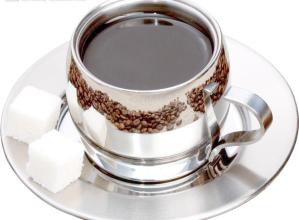Nine factors of coffee taste influenced by common sense of coffee
Coffee tastes unique and delicious and is liked by many people. Do you know what factors affect the taste of coffee? Although many people like to drink coffee, they do not know the common sense of coffee. Today, the editor will introduce you to the relevant knowledge of coffee, telling you about the nine factors that affect the taste of coffee and what are the benefits of drinking coffee.
The common sense of coffee
Do you know what affects the taste of coffee? in fact, among the taste factors of coffee, raw beans account for 60%, roasting accounts for 30%, and production accounts for 10%. This is a general analysis, so throughout the life process of coffee beans, the factors that from crop to cup-- affects the taste of a cup of coffee can be infinitely refined.
Do you know what affects the taste of coffee?
The first is the variety.
I believe you have all heard a saying: reap what you sow, reap what you sow, no matter what you sow, seed selection is the first. Of course, the coffee we talked about is a high-quality Arabica seed, but there are hundreds of small varieties under Arabica. Relatively speaking, the traditional bourbon, Tippica and Mocha are far better than the improved caturra,catuai in taste, although they have low yields. Although catimor, a hybrid of Arabica, Roberta and Arabica, has good yield and resistance to diseases and insect pests, it is relatively insipid in taste.
The second is geographical, climatic and environmental factors.
The second factor that affects the taste of coffee is the geographical and climatic environment, which includes a region's soil, precipitation, humidity, temperature, and some special environmental factors. Generally speaking, sandy soil with easy drainage is more beneficial to the growth of coffee, while volcanic soil is rich in nutrients. The suitable temperature for coffee growth is generally maintained at an annual average of 20 Mel / 30 degrees. Frost weather below 0 degrees is a devastating blow to coffee growth. In addition, sufficient light and timely and appropriate precipitation also have a great impact on the development of coffee fruit.
The third is the processing of coffee beans.
The third is the processing of coffee beans.
The most common are washing and tanning, and there is also a semi-dry treatment called "pulped natural", which is common in Brazil and Central America. The general washing method is beneficial to maintain the acidity and purity of coffee, and it is easy to produce bad sour taste if it is fermented excessively; the sun rule can highlight the mellowness of coffee and retain the richer taste of coffee, but it is easy to produce miscellaneous smell if it is not handled well. The semi-dry rule combines the advantages of both, which can not only ensure the purity of coffee, but also retain more fruity and mellowness, especially the coffee processed by this method has an incomparable sweetness, so the coffee processed in this way in China and the United States has a good name "honey coffee".
The fourth is the freshness of raw coffee beans.
Coffee beans are generally divided into "new crop" and "old crop" according to the harvest year. Although the newly harvested coffee beans tend to show too much astringency and sour taste, the new beans have more refreshing acidity and richer taste than the old beans "old crop", which are more than one year old. As long as they are roasted properly, they can get the rich taste of coffee, just like old rice without fragrance, and old beans lack distinct flavor. No depth.

Important Notice :
前街咖啡 FrontStreet Coffee has moved to new addredd:
FrontStreet Coffee Address: 315,Donghua East Road,GuangZhou
Tel:020 38364473
- Prev

Introduction of coffee roasting knowledge with acceptable aroma introduction of coffee roaster brand
1. Very shallow baking (LIGHTRoast): the degree of baking; very shallow baking, also known as shallow baking. The lightest roasting degree of all roasting stages, the surface of the coffee beans is a light cinnamon color, its taste and aroma are insufficient, this state is almost undrinkable. It is generally used for testing and seldom for tasting. 2. Shallow baking (CINNAMONRoast): baking degree; shallow baking
- Next

Coffee knowledge that office workers must know
90% of office workers have the habit of drinking coffee, because coffee can relieve fatigue and work stress, and gradually develop the habit of drinking coffee. However, many office workers do not know the knowledge of drinking coffee correctly. Next, the editor will introduce the best coffee drinking time and basic knowledge for office workers, so that everyone can drink healthily in the coffee. First of all, office workers can go to work.
Related
- Beginners will see the "Coffee pull flower" guide!
- What is the difference between ice blog purified milk and ordinary milk coffee?
- Why is the Philippines the largest producer of crops in Liberia?
- For coffee extraction, should the fine powder be retained?
- How does extracted espresso fill pressed powder? How much strength does it take to press the powder?
- How to make jasmine cold extract coffee? Is the jasmine + latte good?
- Will this little toy really make the coffee taste better? How does Lily Drip affect coffee extraction?
- Will the action of slapping the filter cup also affect coffee extraction?
- What's the difference between powder-to-water ratio and powder-to-liquid ratio?
- What is the Ethiopian local species? What does it have to do with Heirloom native species?

